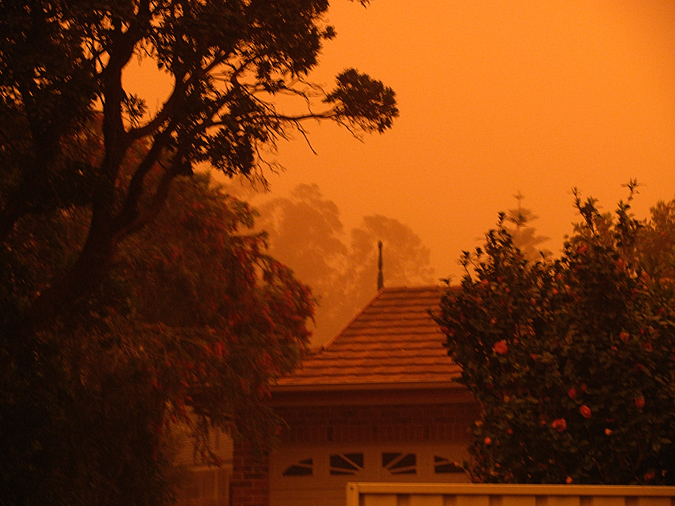
Outback Dust Storm imaged by Helen S of Sydney, Australia at 6:15 am on September 23, '09. �Helen S, shown with permission. |


| About - Submit | Optics Picture of the Day | Galleries | Previous | Next | Today |
Fierce winds from inland New South Wales lofted dust from the ground and carried it as an enormous cloud some 2 km high to Sydney (more images & reports). The sky colour was fading when this picture was taken but earlier it was an opaque blood red. As the sun climbed the colour slowly faded. By mid-day the atmosphere was still opaque but the sky was a dull gray. There is another effect. Clues to it are that the sky changed to gray later on and that other photos taken when the cloud was thin enough to reveal the sun show the latter with a bluish hue. This suggests that some of the dust in suspension (particularly towards the end of the event) was of smaller particle size. Micron sized particles act as Mie scatterers with little wavelength dependence - hence the gray or dilute sky colour. The same particles, if all of similar size, sometimes selectively produce the fabled rare 'blue moon' or in this case a bluish sun - the scattered light is reddened. There was a lot happening the morning of the 23rd! |